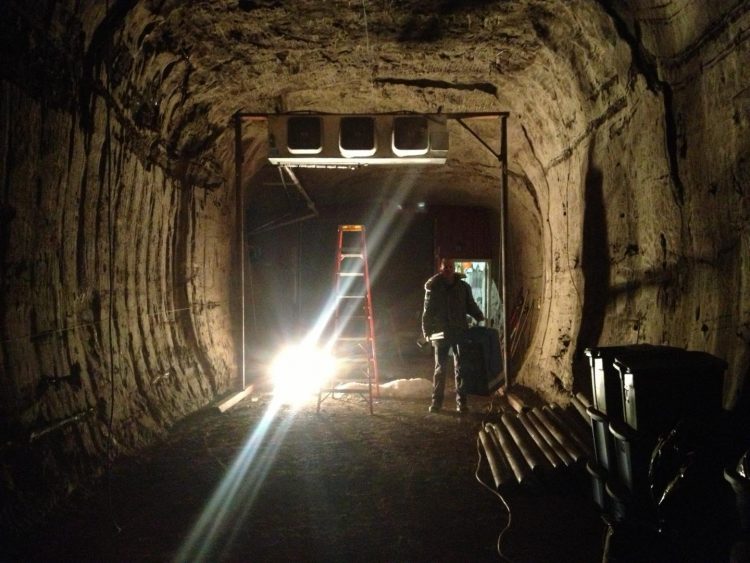Alaskan soil thaw sends carbon directly back into atmosphere

Researchers, including Assistant Professor Robert Spencer, collected samples of permafrost in tunnels operated by the US Army Corps of Engineers. Courtesy of Travis Drake
FSU doctoral student Travis Drake and Florida State University Assistant Professor in Earth, Ocean and Atmospheric Sciences Robert Spencer write in a new paper that permafrost organic material is so biodegradable that as soon as it thaws, the carbon is almost immediately consumed by single-cell organisms called microbes and then released back into the air as carbon dioxide, feeding the global climate cycle. Their findings are laid out in an article published today by the Proceedings of National Academy of Sciences.
This is the first time scientists were able to quantify exactly how fast organic carbon from Alaskan permafrost is converted into carbon dioxide.
“This study really shows what makes permafrost so biodegradable,” said Drake, who completed the work while still an employee at the U.S. Geological Survey and master's degree student at University of Colorado.
“Immediately upon thaw, microbes start using the carbon and then it is sent back into the atmosphere.”
The permafrost examined in the study contained carbon that was 35,000 years old and had been stored frozen out of the carbon cycle until thawed. After 200 hours of thawing, almost half of it was gone, consumed by microbes and released back into the air as carbon dioxide.
“It's like feeding them chocolate,” Spencer said. “You are giving them a food source that they really enjoy and is high in energy.”
The results are troubling, of course, because increased carbon dioxide levels cause the Earth to warm and precipitate more thawing of permafrost.
Additionally, Alaskan permafrost contains one of the largest carbon stores in the world, and scientists have yet to totally understand what will happen to the air and water if vast amounts are released into it courtesy of thawing processes.
Researchers conducted most of the work in tunnels close to Fairbanks operated by the U.S. Army Corps of Engineers and collected samples of permafrost from the icy walls as new tunnels were excavated.
The team which includes scientists from the U.S. Geological Survey and the University of Colorado plans a follow-up study to examine what happens in between the time the soil initially starts to thaw and the carbon is consumed by the microbes.
###
In addition to Spencer and Drake, other researchers on the project were Kim Wickland and Rob Striegl of the U.S. Geological Survey and Diane McKnight of University of Colorado Boulder. Drake first met Spencer while he was a student at University of Colorado conducting fieldwork in Siberia and then opted to come to FSU to study under Spencer for his doctorate.
The research was funded by the U.S. Geological Survey and the National Science Foundation.
Media Contact
All latest news from the category: Earth Sciences
Earth Sciences (also referred to as Geosciences), which deals with basic issues surrounding our planet, plays a vital role in the area of energy and raw materials supply.
Earth Sciences comprises subjects such as geology, geography, geological informatics, paleontology, mineralogy, petrography, crystallography, geophysics, geodesy, glaciology, cartography, photogrammetry, meteorology and seismology, early-warning systems, earthquake research and polar research.
Newest articles

Superradiant atoms could push the boundaries of how precisely time can be measured
Superradiant atoms can help us measure time more precisely than ever. In a new study, researchers from the University of Copenhagen present a new method for measuring the time interval,…

Ion thermoelectric conversion devices for near room temperature
The electrode sheet of the thermoelectric device consists of ionic hydrogel, which is sandwiched between the electrodes to form, and the Prussian blue on the electrode undergoes a redox reaction…

Zap Energy achieves 37-million-degree temperatures in a compact device
New publication reports record electron temperatures for a small-scale, sheared-flow-stabilized Z-pinch fusion device. In the nine decades since humans first produced fusion reactions, only a few fusion technologies have demonstrated…





















